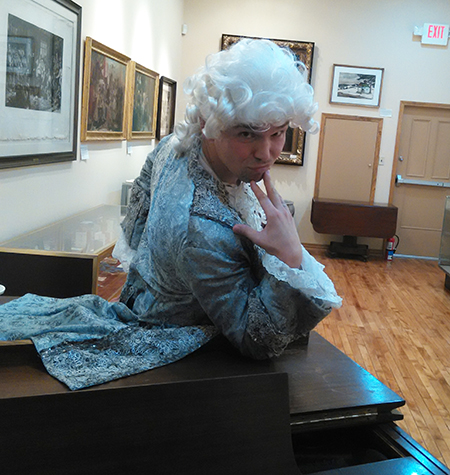by Daniel Hathaway

“It was popular at its debut in the mid-19th century, but Poland was under partition between Russia, Prussia, and Austria, so there’s a patriotic undercurrent,” soprano, executive artistic director — and native Pole — Dorota Sobieska said in a telephone conversation. “It’s a Polish opera. We sing and I cry. It’s sentimental. It’s where my heart is.”
“The music is wonderful,” conductor Grzegorz Nowak said in a separate phone call. “It was all composed by Moniuszko, but it has a folk quality to it. The Mazur [Mazurka] has even been texted so it can be sung by a choir.”
Nowak, also Polish, is principal associate conductor of London’s Royal Philharmonic Orchestra, as well as music director of The Grand National Opera (Teatr Wielki) in Warsaw. He studied at Tanglewood, earned his doctorate at Eastman, then served on the faculty of Bowling Green State University. He’s quite familiar with Moniuszko’s piece, having first conducted it in Warsaw in what he describes as “quite a scandalous production.”
The opera company had hired a film director to stage Straszny Dwór as Nowak’s first attempt at an opera. “Because of his background, he thought that the music had to follow the timing of the action on stage,” he said. “So before I arrived he hired a pianist and cut everything out of the score that didn’t fit. He completely destroyed the music. I said, no way are we doing this, so a huge war ensued.”
When the director insisted that his name be removed from the production, the Polish Ministry of Culture intervened. Nowak suggested a solution: “I said, let’s do one set of posters with the director’s name and one set with mine. I’ll conduct the real version of the opera, and give the performances of his version to my assistant.”

No such problems loom in Cleveland, where Moniuszko’s piece will be performed just as he wrote it with only a few traditional cuts. Sobieska will sing the role of Hanna, and she has assembled a fine cast including Francisco Prado (as Miecznik) and Justyna Giermola (Jadwiga, below), Mikhail Urusov (Stefan), Mikhail Smigelski (Zbigniew), Christina Carr (Cześnikowa), Albert Niedel (Maciej), Pawel Izdebski (Skołuba), Andrzej Stec (Pan Damazy), Jeremy Gilpatric (Grześ), and Agnieszka Bieniek (Old Woman).


“There were nine girls in the Manor house who all got married when boys showed up. Other girls gave the manor its name because it attracted all the men in the area,” Sobieska said.
“Women of the other houses in the district were becoming old maids because of the curse of the manor,” Nowak said, adding that “the opera has a Mozartian ending where everybody gets married, but the underlying plot is very political.”
Contributing to the color of the production, the dancers of Cleveland Ballet will perform the important Mazur to choreography by Gladisa Guadalupe. (Below: a costume designed by Sam Meredith.)

The conductor’s own celebration of the centenary of Polish independence will continue when he takes the Royal Philharmonic to Warsaw for two concerts that include symphonies by Polish composers, as well as Wagner’s and Elgar’s tone poems both titled Polonia.
Published on ClevelandClassical.com June 12, 2018.
Click here for a printable copy of this article




